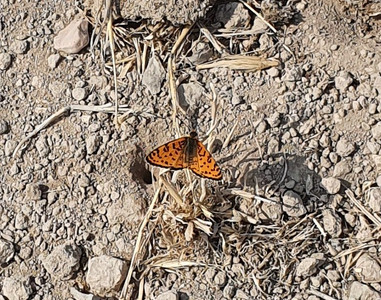Ne'iel
- Mike Levitt

- Nov 20, 2020
- 2 min read
A small hill west of Sha'ab―itself located on the ruins of a Roman/Byzantine Jewish village by the name of Sha'av―where Nahal Chilazon widens into the plain of Akko, hardly noticeable, is actually the site of the unexcavated ruins of a Bronze and Iron age settlement which has long been on my list of short walks close to home. Thus Amber and I climbed the hill one morning, between errands, to see what could be found.

The site actually pre-dates Sha'av, and is identified as Biblical Ne'iel, mentioned in the region of the tribe of Asher.
"And the fifth lot went out for the tribe of the children of Asher according to their families. And their border was Helkath, and Hali, and Beten, and Achshaph. And Alammelech, and Amad, and Misheal; and it met in Carmel westward, and in Shihor-libnath; And it turned toward the sunrising to Beth-dagon, and met in Zebulun, and in the valley of Jiphtah-el toward the north side of Beth-emek, and Ne'iel, and it went out to Cabul on the left..." [Joshua 19:24-27]
It may be the same city referred to as Neah, mentioned in the region of the tribe of Zevulun.
"And the third lot came up for the children of Zebulun according to their families; and the border of their inheritance was to Sarid. And their border went up to the sea, and Maralah, and reached to Dabbesheth, and reached the river that is before Jokneam; And turned from Sarid eastward toward the sunrising on the border of Chisloth-tabor, and it went out to Dabrath, and went to Japhia; And from there it passed along on the east of Gath-hepher, to Ittah-kazzin, and it went out to Rimmon, and from there circled to Neah..." [Joshua 19:10-13]
The Arabic name of the site, Horvat Ya'anin, preserves the ancient root. The city may have been one of the cities of the "land of Cabul" which were traded by King Solomon for cedar wood for the Temple in Jerusalem from King Hiram of Tyre. The settlers may have moved eastwards after that time, but in any event the city is presumed to have been one of those destroyed the Assyrian invasion of Tiglath-Pileser III, in the 8th century BCE. It was never fully inhabited again, but larger settlements sprang up at Sha'av and nearby cities in the Greek and Roman periods.

The hill and its summit have several large flat enclosures, with traces of ruins, pot sherds, remnants of installations including cisterns and a well, and tombs. There are some pictures below showing some of these. Sadly there is not much more to be said, as not much more is known yet!














Comments